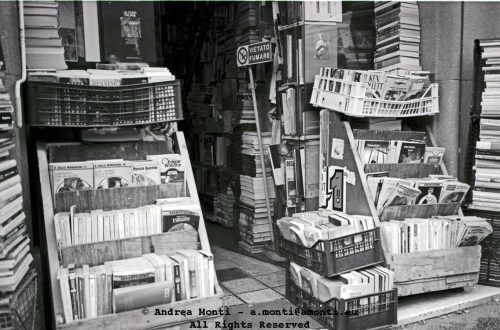
In praise of ‘cheap’ lenses for ‘pro’ works
Full disclosure: I have no relationship with Viltrox. I purchased the lenses with my own money and did not receive any request to write this post.
I have recently discovered Viltrox, a Chinese manufacturer of lenses for the Fujifilm X-system. I am using the AF 85/1,8 II XF and the AF 56/1,4 XF and I am very satisfied by their performance. They are very good for ‘professional’ sessions, however, there are many online reviews that snobbishly rate these lenses as ‘amateur’, ‘non-professional’ or ‘first time portrait photography enthusiasts’ grade. I think that these reviews are unfair and here is why:
- What does ‘better’ mean? It is a known fact that ‘better’ gear does not make a better photographer. It is also a known fact that, unless there are specific challenges such as high-speed moving subjects or inclement weather conditions, a good photographer can shoot good pictures also without ‘state-of-the-art’ pieces of equipment. And speaking of what ‘good pictures’ actually mean: are Tankman or The Legionnaire ‘good’ pictures? By all means, yes, also if their quality is poor. By contrast, many ‘razor-sharp’, ‘vibrant’ and ‘pixel-peeping-proof’ photos often highly praised by online magazines and ‘experts’ are just dull and boring. ‘Better’ is a meaningless word when it comes to professional photography. What matters is whether the pictures’ quality matches the standard set in the agreement with the client. If the contractual obligation is fulfilled, then it is pointless that the pictures could habe been better shot with a brand new mid-format camera rather than with a less fancy albeit rock-solid modern DSLR and lenses made in the eighties. ‘Better’ matters, by contrasts, to amateurs who do not have the need to meet deadlines, produce consistent results and deliver fast and efficiently. They can afford the luxury to spend their time trading in and out cameras and lenses in search of the ‘better’ exposure rather than enjoying photography. ‘Better’ is the semantic drug that ‘independent’ reviewers push (on which authority, sometimes, it is not clear) to addict people into the ‘Gear Acquisition Syndrome’. They profit from commissions earned through affiliate programmes and from being directly sponsored by manufacturers. Of course, not all reviewers have a questionable deontology. It is important, though, to understand the motive behind an article or a video before taking opinions at their face value.
- What does ‘professional grade’ mean? Suppose you work in war zones, harsh climatic conditions, fashion and luxury or that you are the official photographer of artists, music, movies or theatre productions. In that case, you do not only need reliable pieces of equipment (Pentax is among the best if you need high-quality and tough gear). For all ‘normal’ professional uses, what makes the difference and justifies a premium price is service: onsite pick-up and delivering, fast repair and courtesy gear to continue working while the item comes back. Moreover: professionals often rent expensive pieces of equipment, they do not purchase them. Why, then, should somebody buy ‘professional grade’ gear to shoot in his backyard? Moreover, it is difficult to see the point in going around with cameras and lenses that cost thousands of Euros, being concerned about damages, accidental losses and thieves rather than shooting. I have experienced first-hand this condition when I used to work with a Leica kit. The moment I sold it and switched to Fujifilm I felt liberated.
- What does ‘pro’ mean? ‘Pros’ are supposed to be those who work in exotic locations, dangerous places or exclusive events. They have the status all of us dream of achieving. Of course, such people do exist; however, they are but a few. The vast majority of ‘professionals’ earns their living shooting marriages, ceremonies, college games and family portraits, making Youtube videos. Nothing wrong with that. To succeed in this kind of business, one needs to be highly trained and properly equipped as well. However, in this case pictures must please the eye of the client (in other words, his aesthetic taste). Moreover, much too often the outcomes are predetermined and a little room lasts for creativity. The shooting lists available on the Internet are self-explanatory: you take pictures of the bride, the groom, the bride and the groom together, the bride and the groom with the parents, and then the kiss, the dance etcetera. During the job these professional might, of course, still practice the creative side of photography (or, more often, mimick mainstream visual languages). Still, they are actually free when they shoot as ‘amateurs’, i.e. when they are not working and are free to take pictures the way they like, provided that after a day of hard field work they still want to use a camera.
- What do you need to take pictures, actually? Photography gear is a tool, and as such, it should be fit for the job. If you have nothing else available, you may use a screwdriver to hammer a nail in the wood (so, out of the metaphor, if you have nothing else at hand, you may, of course, use a smartphone to take a photo). However, suppose you are not working in extreme conditions or under tight professional constraints. In that case, you do not need to put big money after expensive gear and services that add nothing to the final result.
- ‘Cheap’ lenses are also suitable for ‘pro’ work. If the lens quality and performance fit the client’s contractual requirements, ‘cheap’ gear such as those made by Viltrox allows to purchase them in pairs to have a backup ready with no need to wait for the repair or the replacement. Moreover, there is always the possibility of an accident that makes the lens unusable. In theory, a professional should have a redundant ‘pro-grade’ kit; however, this is an unbearable option for many ‘pro’ photographers. By contrast, going for ‘cheap’ alternatives allows having spare lenses immediately available. That could save the day (and the assignment). Definitely, this is a plus.
Wrapping-up: Viltrox lenses – as many classic and (now) inexpensive Pentax, Nikon and Canon lenses from the past – can deliver very good results in absolute terms also in professional domains. There is no need to put money on the next brand-new glass just because it has that ‘tad’ that most humans will never ever notice or use. It is more convenient save money and being able to build a redundant kit rather than purchasing a single lens and risk to lose an assignment because of the unavailability of a prompt replacement in case of accident.
An honest, brutal and ego-bashing self-assessment helps decide which kind of gear is ‘necessary’ to each individual photographic journey, either for ‘professional’ or recreational purposes. Of course, everyone is free to spend their money as they wish and purchase expensive cameras and lenses; but, please, do no say that it is necessary to take ‘better photo’.




